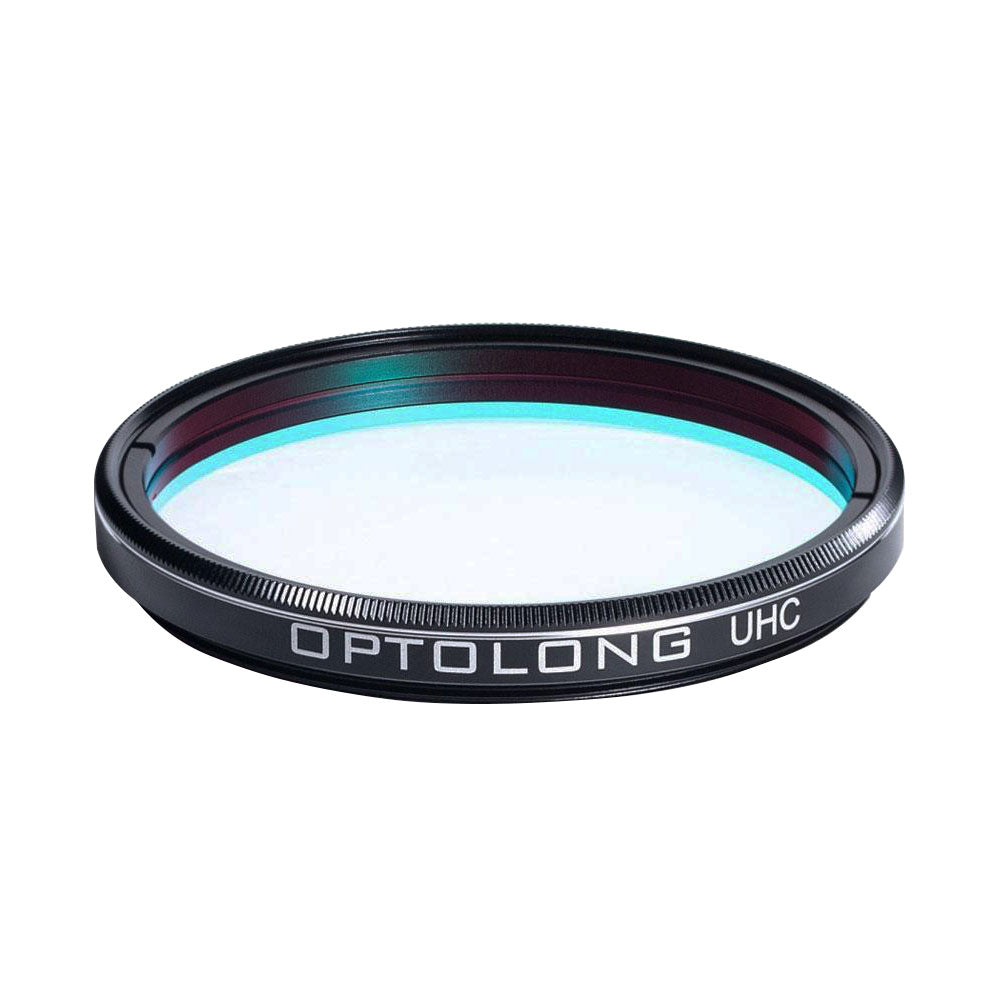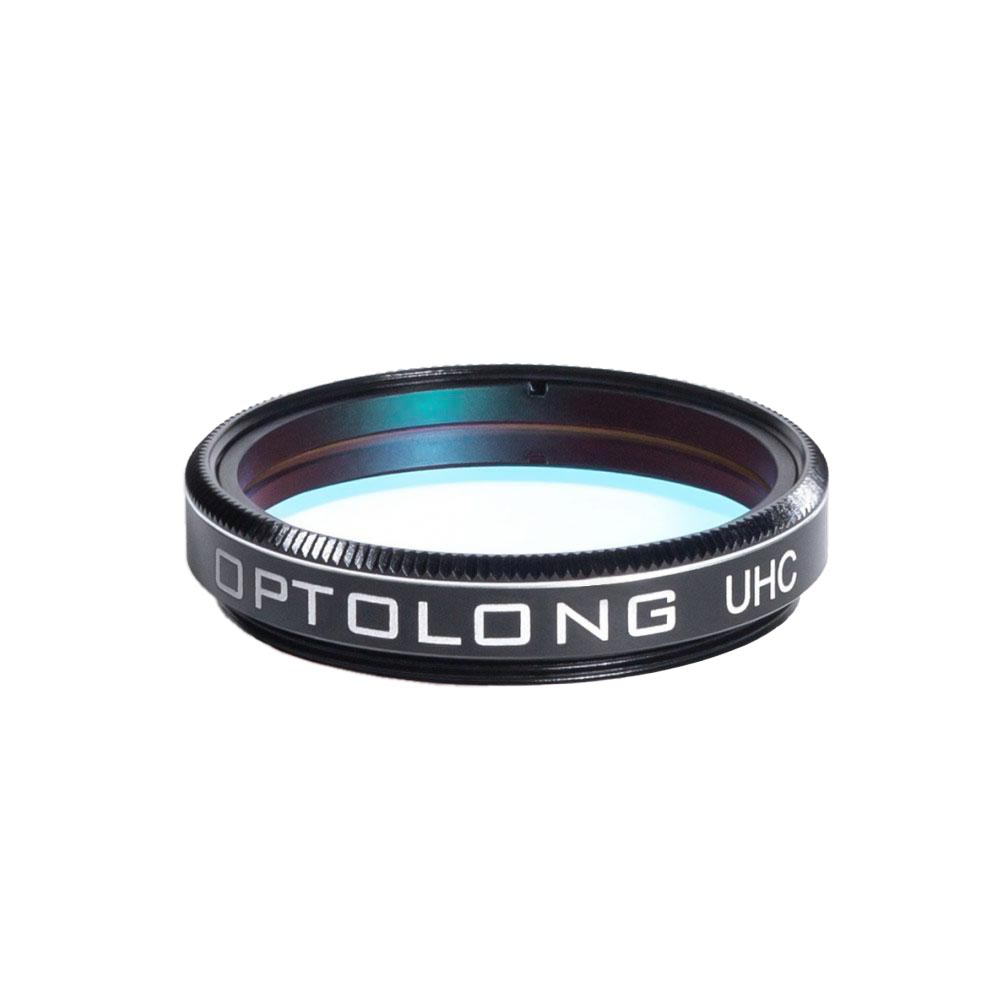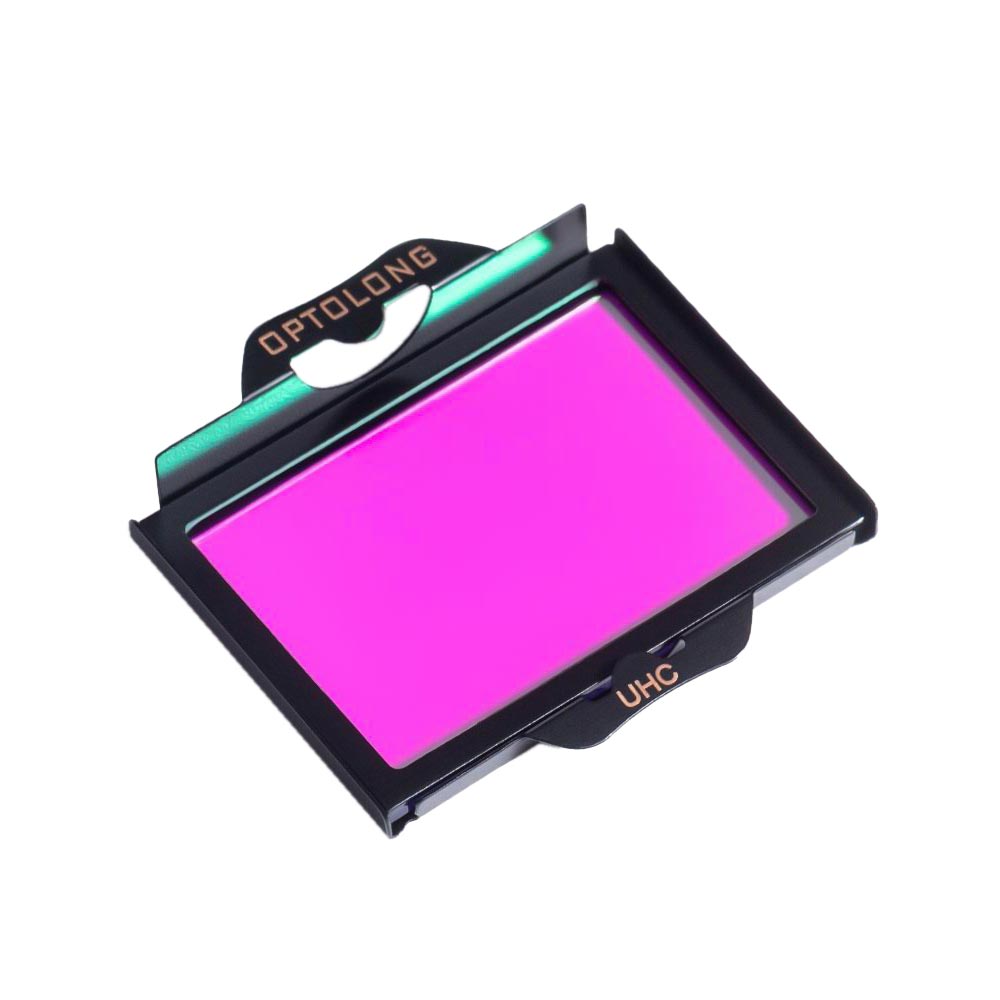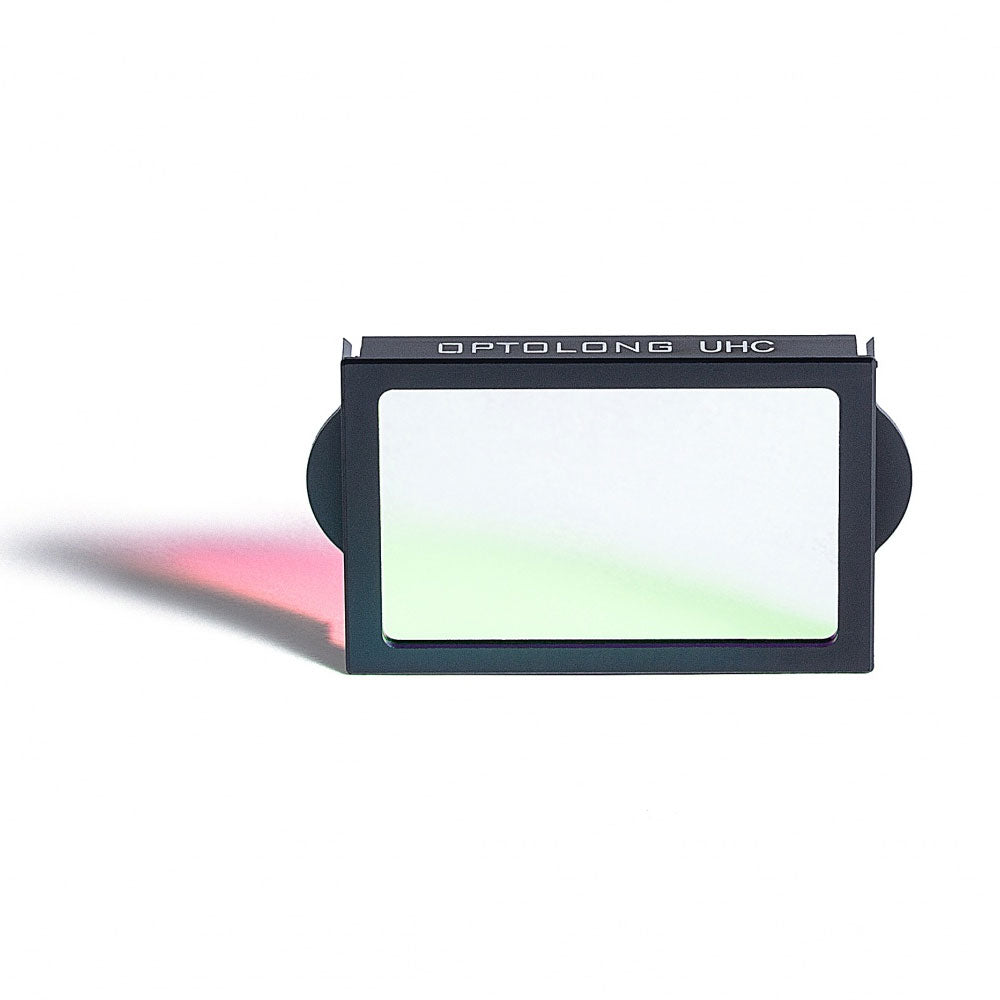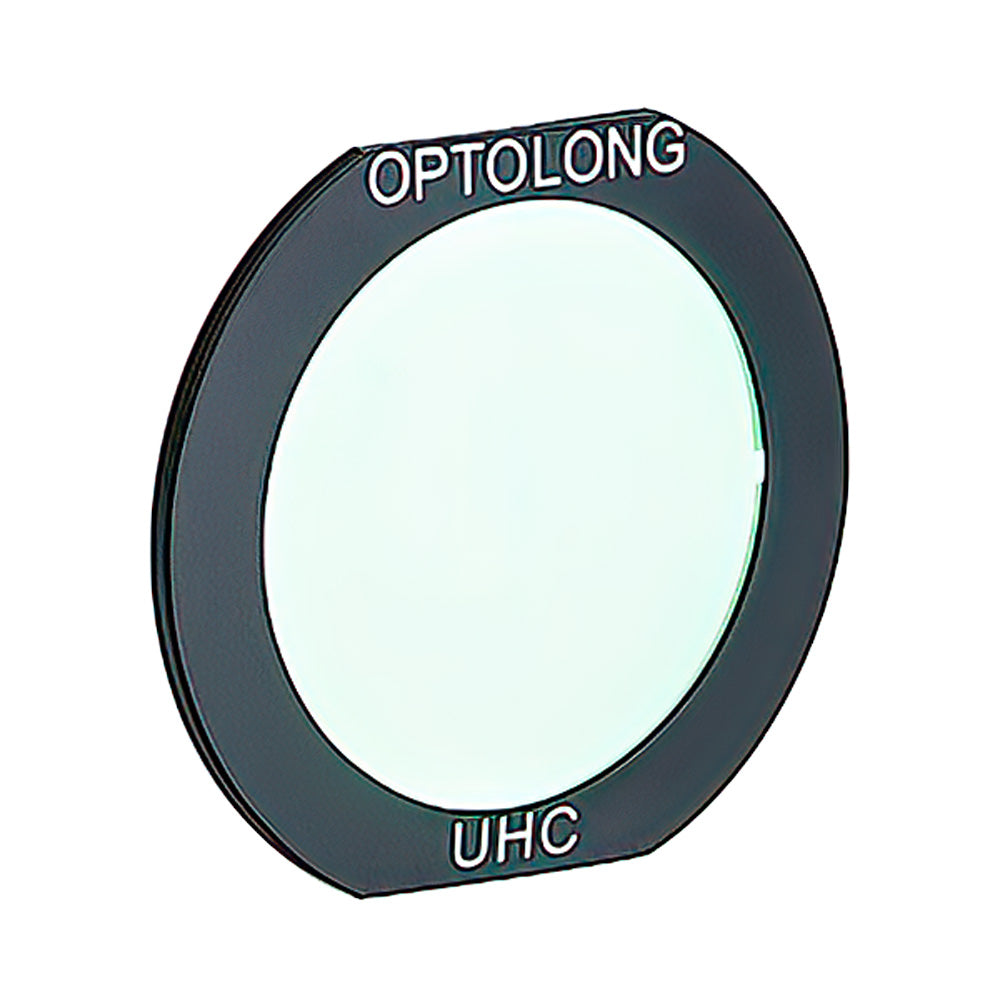OPTOLONG UHC FILTER
Optolong
FREE SHIPPING
OPTOLONG UHC FILTER - EOS-C is backordered and will ship as soon as it is back in stock.
The Optolong UHC (Ultra High Contrast) broadband filter is designed to improve the visibility of deep sky objects such as emission nebulae and supernova remnants. It rejects the typical wavelength associated to artificial light and it is highly transparent in the main emission nebula lines: OIII (496nm and 500nm), H-beta (486nm), NII (654nm and 658nm), H-alpha (656nm) and SII (672nm).
Note: The Nikon Full Frame version of the UHC filter is not compatible with the D850.
The EOS Full Frame version is not compatible with the 6D Mark II or 5D Mark IV.
- It blocks the artificial light from mercury vapour lamps, both high and low pressure sodium vapour lights and the unwanted natural light caused by neutral oxygen emission in our atmosphere (i.e. skyglow).
- Maximum transmission of the main nebula emission lines: OIII (496nm and 500nm), H-beta (486nm), NII (654nm and 658nm), H-alpha (656nm) as well as SII (672nm),
-
Two transmission bands.
- Can also be used for visual observations as well as in astrophotography.
- Ideal for sub-urban areas with light pollution.
- Ultra-thin filter cell to maximise the compatibility with most filter wheels.
- Multi-layers anti-reflection coating.
- Cell in Aerometal Material, CNC machined, sand blasted, black anodized and laser engraved.
- Plastic PP Case, high pressure EVA Case Lining.
For astronomy cameras it needs to be used in combination with an IR/UC cut filter. Alternatively it can be used the CLS-CCD filter that cuts off the infrared and ultraviolet wavelengths. In DSLR's the IR/UV filter is embedded in the camera so the standard UHC filter is sufficient.
Light pollution filters do not eliminate the effects of light pollution or increase the object’s brightness. It does increase the contrast between nebulae and night sky.

The interferential coating are deposited on the substrate using electron-beam gun evaporation with Ion-assisted deposition coating technology. This increases the filters durability and resistance to scratching, as well as stability on CWL (central wavelength) and no deviation affected by temperature changes. The planetary rotation system offers precision and homogeneity of coatings ensuring high transmission of pass-band and high optical density off-band.
WARNING: Optolong filters are not designed for sun observations. DO NOT LOOK AT THE SUN WITH OPTOLONG FILTERS. You could become BLIND if you fail to observe the warning.
Specifications
| Passing band | Dual band H-Alpha and OIII |
| Glass thickness |
2.0 mm (for 1.25" and 2" filters) ; 1 mm (clip series) |
| Optical flatness |
1/4 λ (wavefront) |
| Band-pass transmission | 90% across major nebulae bandpass |
| Coating | Fully multi-coated |
|
Surface quality |
60/40 (in accordance with US military watch MIL-O-13830) |
| Parallelism | 30" |
|
Glass type |
Monolithic optical substrate (non glued) |
| Available sizes | 1.25", 2", clip on EOS-C, clip on Eos Full Frame (FF), clip on Nikon Full Frame (FF) |
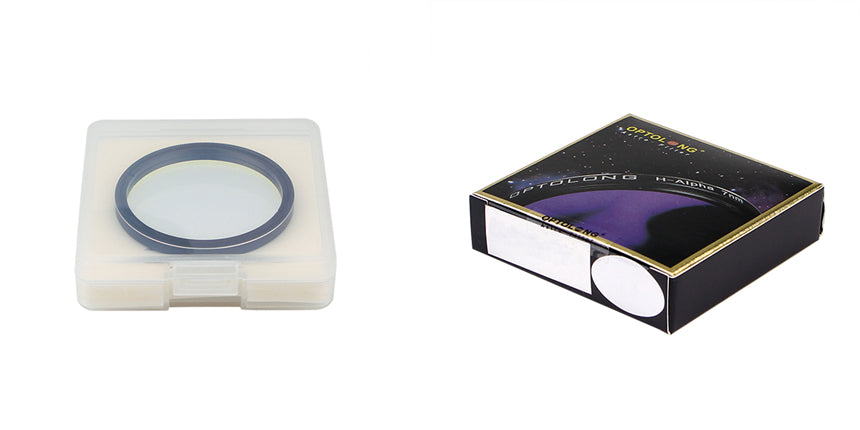
Downloads
|
|

